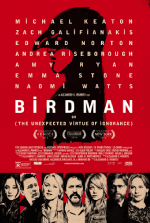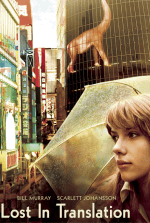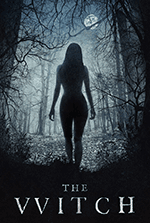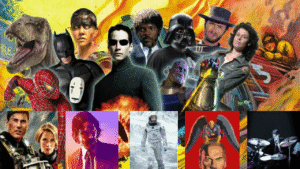Imagine sitting in a packed theatre, the climax of a film unfolding on screen. The tension builds, the music swells—and then, suddenly, it just… ends. No clear resolution, no finality, just a cut to black or a lingering shot that leaves you wondering. Some might call it frustrating, while others see it as thought-provoking genius. Open-ended cinema endings have always been a divisive yet fascinating storytelling tool, leaving audiences with more questions than answers.
But why do filmmakers opt for such endings? And more importantly, why do they work so well?
Why Open-Ended Cinema Endings Work
A good open-ended conclusion isn’t just about leaving things unfinished—it’s about making the audience an active participant in the story. Unlike traditional endings that neatly wrap up conflicts and character arcs, open-ended conclusions force viewers to think, interpret, and even argue about what really happened. This engagement is what makes such films stay in our minds long after the credits roll.
Filmmakers use ambiguity for various reasons. Sometimes, it’s a way to keep the mystery alive (Inception, 2010). Other times, it’s about mirroring real life, where not everything has a clear resolution (No Country for Old Men, 2007).
The Psychology Behind the Ambiguity
Human brains crave closure. When we watch a film, we’re conditioned to expect a resolution—a hero triumphing, a mystery being solved, a conflict coming to a definitive end. But when a movie denies us that satisfaction, our minds go into overdrive, filling in the gaps with our own interpretations. This makes open-ended films deeply personal; two people can watch the same movie and walk away with completely different conclusions.
This ambiguity also gives films a longer shelf life in public discourse. If Christopher Nolan had outright confirmed whether Cobb was dreaming at the end of Inception, would people still be debating it years later? Probably not. The lack of resolution keeps conversations alive, turning films into cultural phenomena.
Moreover, open-ended endings tap into existential and philosophical questions. They make us reflect on deeper themes—fate versus free will, the nature of reality, and the fluidity of perception. Many of these films become iconic because they refuse to dictate a single truth, instead letting audiences shape their own interpretations.
Famous Open-Ended Films That Sparked Debate
Christopher Nolan’s Inception is perhaps the gold standard of open-ended films. The final shot—Cobb’s spinning top—teases the audience with a crucial question: is he still dreaming? The screen cuts to black before we see if the top falls, leaving the fate of Cobb’s reality unresolved. Nolan himself has never given a clear answer, making the debate eternal. This ambiguity is what keeps Inception in discussions years after its release, as fans continue to present evidence supporting both possibilities.
 The Coen Brothers’ No Country for Old Men takes ambiguity to another level. Instead of a traditional climax, the film ends with Sheriff Bell recounting a dream, reflecting on mortality and his fading role in an unforgiving world. Audiences expecting a final showdown between protagonist and antagonist were left scratching their heads, but the film’s message about the randomness of fate and inevitability of change was perfectly conveyed. The abrupt cut to black leaves viewers feeling the same uncertainty and helplessness as Bell himself.
The Coen Brothers’ No Country for Old Men takes ambiguity to another level. Instead of a traditional climax, the film ends with Sheriff Bell recounting a dream, reflecting on mortality and his fading role in an unforgiving world. Audiences expecting a final showdown between protagonist and antagonist were left scratching their heads, but the film’s message about the randomness of fate and inevitability of change was perfectly conveyed. The abrupt cut to black leaves viewers feeling the same uncertainty and helplessness as Bell himself.
In Birdman, we see Riggan Thomson seemingly leap to his death—only for the film to cut to his daughter’s reaction, looking upwards and smiling. Did he really die, or did he actually possess the powers he believed in? The film plays with magical realism so well that either interpretation seems valid, making it an endlessly discussed ending. This deliberate vagueness serves to blur the line between fantasy and reality, much like the protagonist’s own mental state.
 Sofia Coppola’s Lost in Translation ends with an intimate whisper exchanged between Bill Murray’s and Scarlett Johansson’s characters. The audience never hears what was said, leaving the moment open to interpretation. Was it a farewell, a promise, or something more? The mystery enhances the film’s themes of fleeting connections and unspoken emotions. This delicate moment ensures that each viewer takes away a personal meaning, making the film feel uniquely resonant.
Sofia Coppola’s Lost in Translation ends with an intimate whisper exchanged between Bill Murray’s and Scarlett Johansson’s characters. The audience never hears what was said, leaving the moment open to interpretation. Was it a farewell, a promise, or something more? The mystery enhances the film’s themes of fleeting connections and unspoken emotions. This delicate moment ensures that each viewer takes away a personal meaning, making the film feel uniquely resonant.
Stanley Kubrick’s masterpiece 2001: A Space Odyssey takes ambiguity to cosmic levels. The final act, featuring Dave Bowman’s transformation into the Star Child, has been analyzed endlessly. Is it a commentary on human evolution? A metaphor for enlightenment? Kubrick never provided a definitive answer, adding to the film’s legendary status. The surreal, almost wordless ending challenges audiences to derive their own meaning from the film’s visuals and themes.
The Role of Open-Ended Cinema Endings in Different Genres
 Ambiguous endings aren’t exclusive to any one genre. Psychological thrillers (The Prestige, 2006), horror films (The Witch, 2015), and even romantic dramas (Before Sunset, 2004) have all used open-ended storytelling to great effect. Horror films, in particular, often use ambiguity to leave audiences with lingering dread—who can forget the chilling final shot of The Thing (1982)?
Ambiguous endings aren’t exclusive to any one genre. Psychological thrillers (The Prestige, 2006), horror films (The Witch, 2015), and even romantic dramas (Before Sunset, 2004) have all used open-ended storytelling to great effect. Horror films, in particular, often use ambiguity to leave audiences with lingering dread—who can forget the chilling final shot of The Thing (1982)?
In science fiction, open-ended conclusions frequently explore philosophical dilemmas. Films like Blade Runner (1982) raise existential questions about identity and humanity, leaving viewers pondering their own definitions of consciousness. Even within action films, directors sometimes use ambiguity to challenge audience expectations, as seen in The Dark Knight Rises (2012), where Bruce Wayne’s fate is left up to interpretation.
When Open-Ended Cinema Endings Fail
Not all ambiguous endings work. Sometimes, they feel unearned—like a cheap way to avoid writing a proper resolution. If a film builds up a compelling mystery or character arc but fails to give any clues for interpretation, it can feel frustrating rather than thought-provoking. Open-ended storytelling works best when it provides enough thematic depth for audiences to draw their own conclusions, rather than leaving them completely in the dark.
A good example of an open-ended ending that left audiences divided is The Grey (2011). The film teases a final confrontation between Liam Neeson’s character and a wolf but cuts to black before the battle occurs. While some found it poetic, others felt cheated by the lack of closure. A strong ambiguous ending should encourage analysis rather than making audiences feel like they’ve been left hanging without purpose.
Love It or Hate It, It Stays With You
Open-ended films might not be everyone’s cup of tea, but they undeniably leave a lasting impact. They challenge conventional storytelling, force audience engagement, and often elevate a film into legendary status. Whether you love them or hate them, you can’t deny one thing—they make for great post-movie debates.
So next time a movie ends with an ambiguous note, instead of feeling frustrated, embrace the uncertainty. After all, isn’t life itself a bit open-ended?
Read More:



























